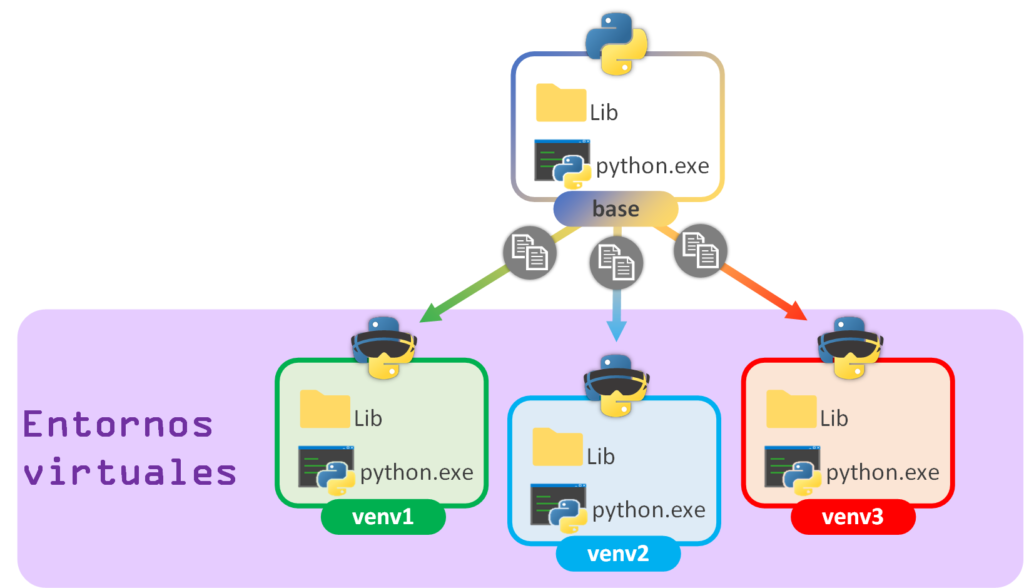

- CREATE VIRTUAL ENVIRONMENT PYTHON CONDA INSTALL
- CREATE VIRTUAL ENVIRONMENT PYTHON CONDA FULL
- CREATE VIRTUAL ENVIRONMENT PYTHON CONDA SOFTWARE
Windows UsersĪnaconda is just like you normal application.
CREATE VIRTUAL ENVIRONMENT PYTHON CONDA SOFTWARE
Virtual environment is an wrapper/ environment which will have its own copies of packages and environment variables and is useful when working with different versions of the same software package on the same system. In it, the packages are managed through conda (alternative to pip). This is a cheatsheet for Anaconda with virtual environment.Īnaconda is a widely used open-source distribution of Python and R programming languages speciafically designed for applications in Machine Learning, Data Processing and others.

In this post, we will go through the all commands to master the use of virtual environments using conda/ Anaconda. You can read more about VS Code support for virtual environments here. Note that this applies only to venv not Conda environments (which have a separate mechanism for binding to the current VS Code session). If you create a virtual environment in the env/ directory as described above, Visual Studio Code should automatically discover that environment when you load a workspace from the environment’s parent directory.
CREATE VIRTUAL ENVIRONMENT PYTHON CONDA INSTALL
If you need to install Python packages, simply use pip or conda within the terminal as described above. Just be sure to create an RStudio project within the same directory where you created your env and things will work as expected with no additional configuration. RStudio will automatically activate any venv or condaenv that it finds within a project directory. If you need to install R packages, use install.packages if you need to install Python packages, simply use pip or conda within the terminal as described above. If you are using renv, RStudio will automatically do the right thing in terms of binding Quarto to the R and/or Python packages in your project-local environments. If you are using Quarto within RStudio it is strongly recommended that you use the current release of RStudio from (the documentation below assumes you are using this build). The workflow is similar if you are using conda environments. ps1 py -m jupyter labĪll of the Python packages installed within the env will be available in your Jupyter notebook session. To create a new Python 3 virtual environment in the directory env: PlatformĮnv\Scripts\Activate.
CREATE VIRTUAL ENVIRONMENT PYTHON CONDA FULL
See the full documentation on using virtual environments with Python for additional details. Here we’ll provide a brief run through of creating a venv for a Quarto project. We’ll also cover using virtual environments with JupyterLab, RStudio, and VS Code.

In these examples we’ll assume that you are already within a project directory that contains Quarto documents (so the environment will be created as a sub-directory of the project). Renv (package for managing R environments)īelow we’ll provide some example workflows for using these tools with Quarto. There are several popular flavors of virtual environment, we will cover the following ones here: This both helps you to faithfully reproduce your environment (e.g. if you are collaborating with a colleague or deploying to a server) as well as isolate the use of packages so that upgrading a package in one project doesn’t break other projects. Virtual environments provide a project-specific version of installed packages.


 0 kommentar(er)
0 kommentar(er)
